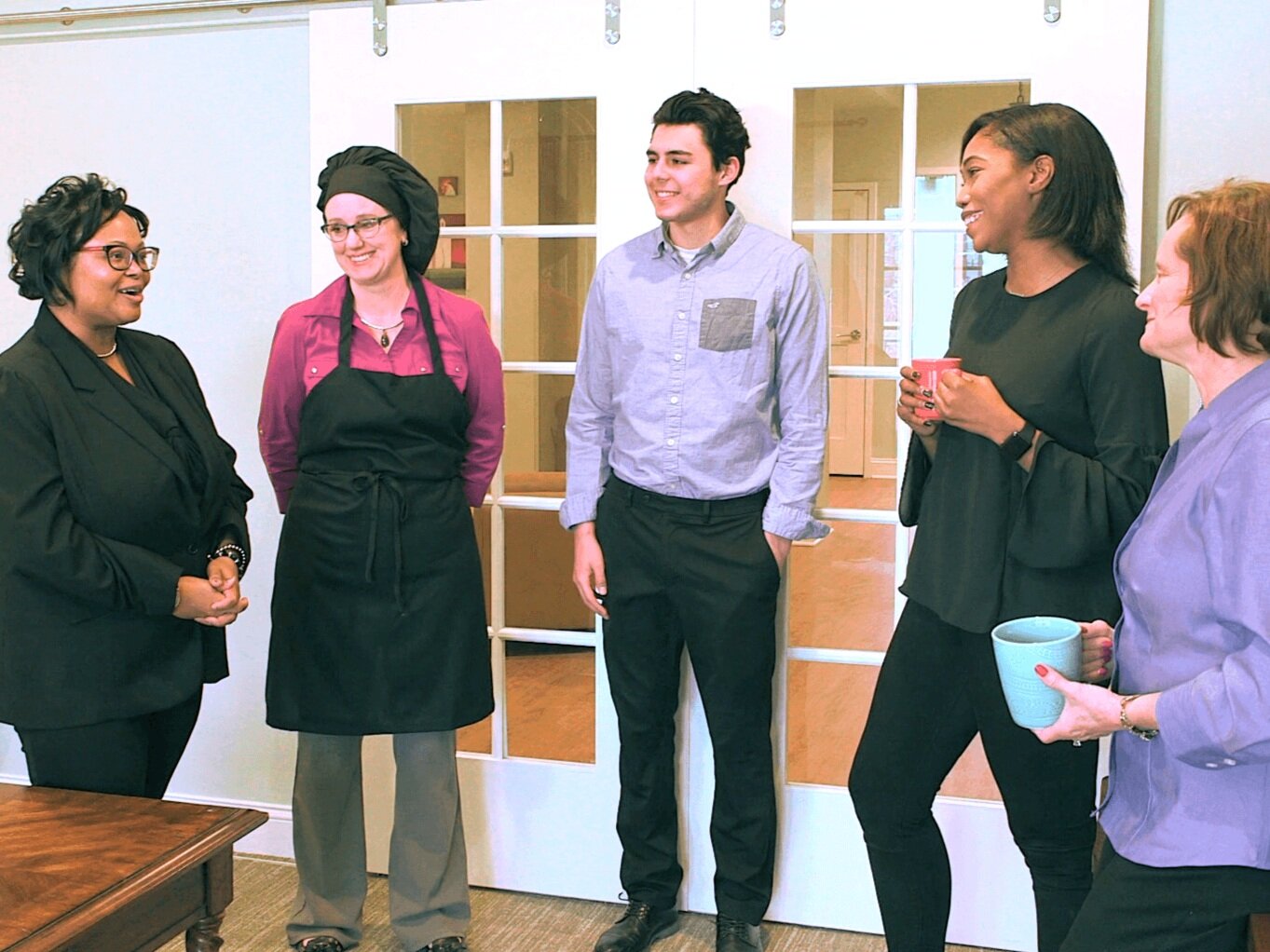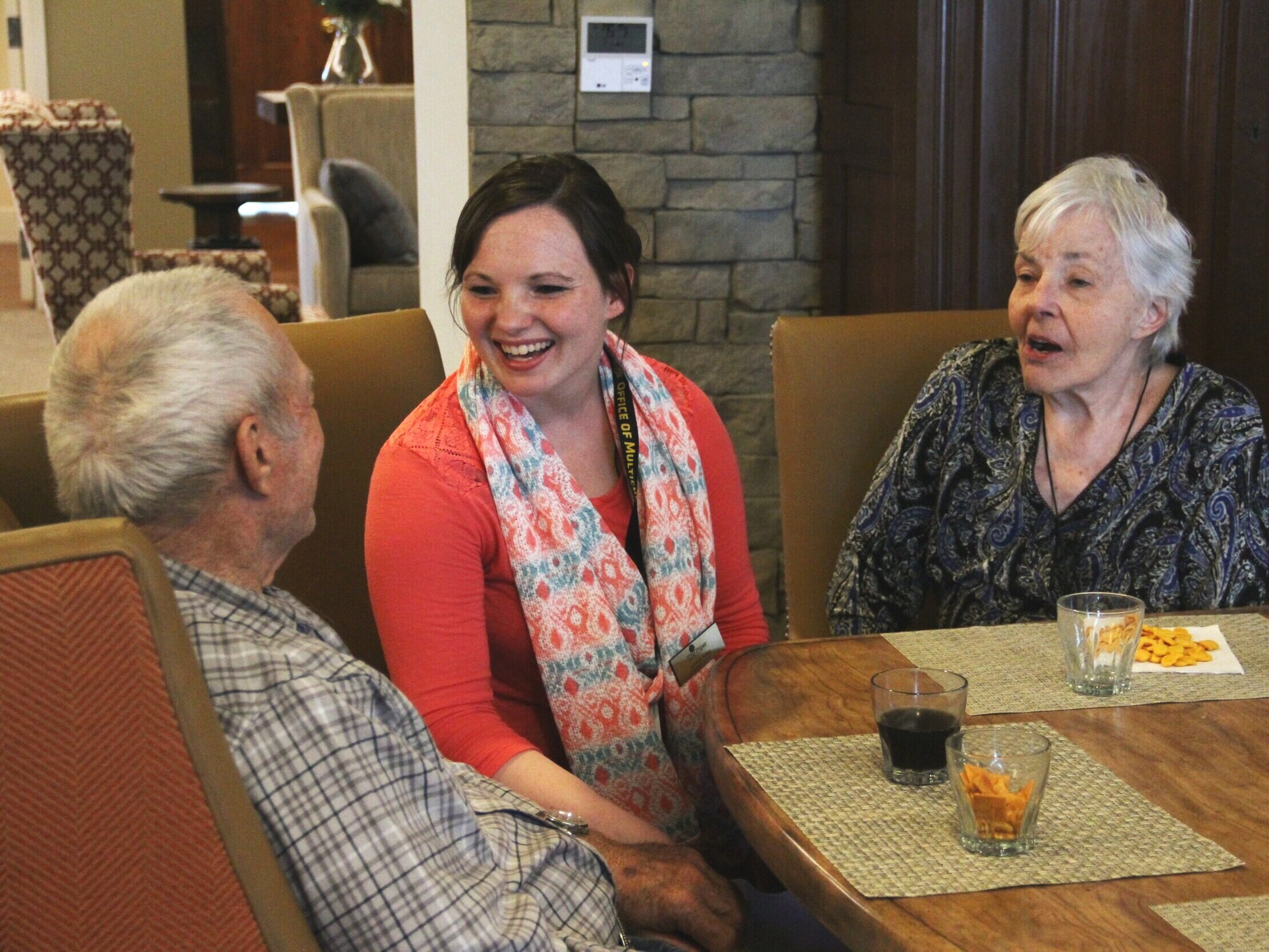
Household
Model
Why would we ask anyone to give up home, just when they need it the most?
In the Household Model, long-term care homes adopt a person-centered approach that shapes the physical environment, organizational structure, and interpersonal relationships in ways that create an atmosphere of genuine home, while providing elders with clear opportunities to direct their own lives.
Person-Centered
In the Household Model, long-term care homes treat the resident as a person. Their needs and preferences are more important than what is easiest or most efficient for the caregivers. Their voices are heard and desires honored.
Physical Environment
Everything is structured to meet the objective of person-centered care and creating home. This ranges from building/remodel design to including a resident’s preferences in decor.
The Household Model breaks down a traditional facility or new development into households of 14-20 residents, with their own kitchen, dining room, living room and often the extra small cozy spaces you’d find in any home (den, patio, front porch).
Organizational Structure
Residents are more in charge of their own lives by redesigning the organizational structure so that the people who directly serve the residents are empowered with decision making.
Interpersonal Relationships
Households are served by consistent staff which encourages real friendships between residents and staff and deep knowledge of each resident as an individual.
Household life is “normal,” spontaneous and full of new experiences. Quality of Care and Quality of Life are of the highest and benefit from a symbiotic relationship.

The Result
True Home with clear opportunities for elders to direct their own lives.
Residents get up when they want, bathe how and when they want, go to bed when they want, eat when and what they want and decide how they will spend their day.
A true Household Model is built through the development of the three components that support a home where elders are in the driver’s seat:
The 3 R’s of Culture Change
Traditional departments are eliminated to integrate disciplines with the self-led household team structure. In retirement communities the system-wide departments (facilities and grounds, dining services, marketing and sales) often change their nomenclature from “departments” to “services,” further strengthening the philosophy resident-directed community and resource-bearing leadership.Leadership is spread throughout the organization. Frontline staff, residents, family members, managers and executives share leadership responsibilities and are all empowered to make life-impacting decisions as a team.
Reshaping the physical environment into neighborhoods or households with their own living room and dining room, and -- in households -- a kitchen. Homey spaces and furnishings must be a part of any renovation.
In their book, In Pursuit of the Sunbeam, LaVrene Norton and Steve Shields give us “The Essential Elements of the Household Model,” illustrating the depth and nuance of thinking that goes into making the model a success:
- The household is each resident’s home and sanctuary.
- The people who live here direct their own lives, individually and collectively.
- The boundaries of the person and his/her home are clear and respected as a matter of course.
- Grace, a shared sense of what is sacred about the household and its people, is deeply valued, consciously created and preserved. Ritual, spontaneity, friendship, spirituality, celebration, recreation, choice, interdependence, art, and humor are all manifestations of a culture of grace.
- The people who live here are loved and served by a responsive, highly valued, decentralized, self-led service team that has responsibility, authority, and accountability.
- Leadership is a characteristic, not a position. Leaders support and are supported by values-driven, resource-bearing principles and practices as a way for each person to actualize his or her full potential.
- All systems, including treatments, exist to support and serve the person within the context of his or her life pursuits.
- We build strong community with one another, our family, neighbors, and town. Each household is part of a neighborhood of households, dedicated to continuous learning.
- The physical building and all its amenities are designed to be a true home. Institutional creep in design and culture is treated as a wolf at the door.
- The establishment of a healthy and sustainable home comes through the integrated balance of resident-driven life, leadership, organizational structure, physical environment and financial sustainability.
History
LaVrene Norton and Action Pact were the first to speak of the Household Model. They defined it and articulated its philosophy and values.
In 1997, the first households within this model opened at Northern Pines (now Bigfork Valley) in Bigfork, MN, developed by Linda Bump and guided and supported by Action Pact. LaVrene Norton immediately encouraged Bill Thomas (Green House) and Steve Shields (Meadowlark Hills) to visit this innovation. They went on to develop their own successful household environments and soon the long-term care world was buzzing about the possibilities for a real home to replace the nursing home. Each small group of residents (10 – 20) living in private rooms around a shared kitchen, dining room, living room, front door and back yard.
Since then, Action Pact has guided scores of nursing homes across the country in their transformation from institution to Household Model.





